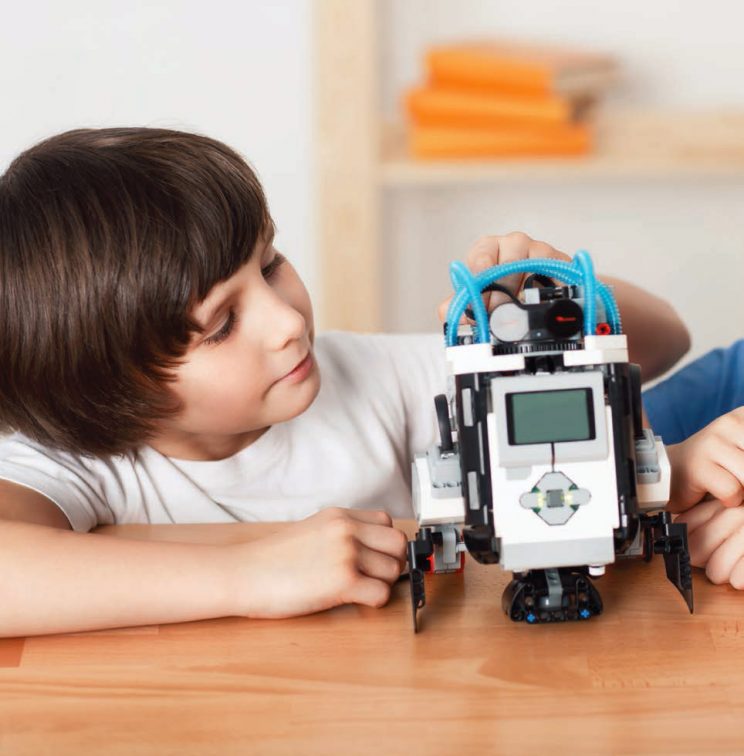Social Robots: One of the New Tools for Children with Autism
Research article  Open access |
Available online on: 10 November, 2019 |
Last update: 10 November, 2019
Open access |
Available online on: 10 November, 2019 |
Last update: 10 November, 2019
 Advances in technology in recent years have enabled robots to fulfill a variety of human-like functions, as well as to aid with the goal of improving social skills in children with autism.
Advances in technology in recent years have enabled robots to fulfill a variety of human-like functions, as well as to aid with the goal of improving social skills in children with autism.
Children with autism and other developmental disorders often struggle with social skills, communication and affection. They often isolate themselves and in turn are also isolated from their community and environment. This is when a robot may be the perfect companion to help autistic children develop social skills and have better communication with the people around them.
What’s So Special About These Robots?
To start with, social robots are simpler than humans to interact with, their actions are perfectly repeatable and they can be modified in various ways to meet the requirements of different children.
They are useful for diagnosing autism, which usually cannot be diagnosed until a child is at least three years old. But there is growing evidence that a diagnosis can be made much earlier by studying eye contact in high risk babies, e.g. those with close relatives who are autistic.
Social robots, with cameras for eyes, can monitor eye contact accurately and over long periods of time to gather evidence for a diagnosis one way or the other. They play a central role in exercises that help children improve their social, sensory and cognitive skills as well as their motor control. Therapists have programmed the robots to perform tasks that help the child practice eye contact, turn taking, imitation and so on. “Such activities include teaching a child to initiate greetings, to wait for its turn to throw the ball, to follow the robots gaze to an object of interest, and to copy the robot’s movements as it dances,” says Dr. Cabibihan, Ph.D. in Bioengineering and Associate Professor, Department of Mechanical and Industrial Engineering, Qatar University.
“The most important feature that robotics bring is the ability to work on motor skills,” says de Toldi, co-founder and CEO of Leka; “Because the robot moves around, the child has to use his whole body to interact with the robot. And this way it opens up the child to his surroundings.”
Pick Your New Friend!
Today, there are many robots on the market. And recent studies have shown that social robots provide co-therapy, in combination with the efforts of a human expert of course and potentially help teach autistic children new skills; as these children are more comfortable looking at a robot than a human therapist. Below is a list of some prominent social robots on the market:
- Leka, a robotic smart toy designed to teach multiple skills, helps coach children through games like hide and seek. One child shakes the robot to activate it, hides it, and the other child follows the robot listening to the sound that it makes. When the designers tested it with a child with autism and another with Down syndrome, after some time, they were able to play on their own – something that they didn’t do before. “They were able to play autonomously without the parents or caregiver being there,” says Ladislas de Toldi, the Paris-based co-founder and CEO of Leka.
- Zeno is a talking and smiling 2-feet tall robot. It can interact with children through non-verbal communication such as body movements and facial expressions, speeding up diagnosis and perhaps even enabling it to be carried out before a child can talk.
- Kelly is an expensive talking robot that incorporates Artificial Intelligence. It teaches autistic children to make eye contact or take turns talking. Kelly is a “humanoid” robot, it is capable of developing and displaying emotions, it can also walk, talk, and dance, and when the kids succeed, the robot can even give them a celebratory high-five.
- Romibo is a low-cost and friendly robot designed to be an assistive device for a behavioral expert or teacher. “The robot is safe. Its facial features don’t change, which is less overwhelming for my child”, says Laura McGuire, the mother of Liam, an autistic child.
- ONE is a low-cost robot for children with special needs. It is customizable, portable and is designed to gather data about autism. Nowadays, the robot has become a friendly playmate and a mediator between the therapist and the child, a difficult role for humans to play consistently. We hope that these social robots can really make a difference to the world of autistic children.
